Key takeaways:
- Evaluating photographs enhances skills by identifying strengths and weaknesses, fostering artistic growth.
- Technical aspects like composition, lighting, and emotion significantly influence the viewer’s connection to an image.
- Personal reflection helps in aligning photography with individual growth, pushing creative boundaries, and capturing emotional moments.
- Engaging with a community provides diverse feedback, promoting accountability and encouraging experimentation in photography styles.
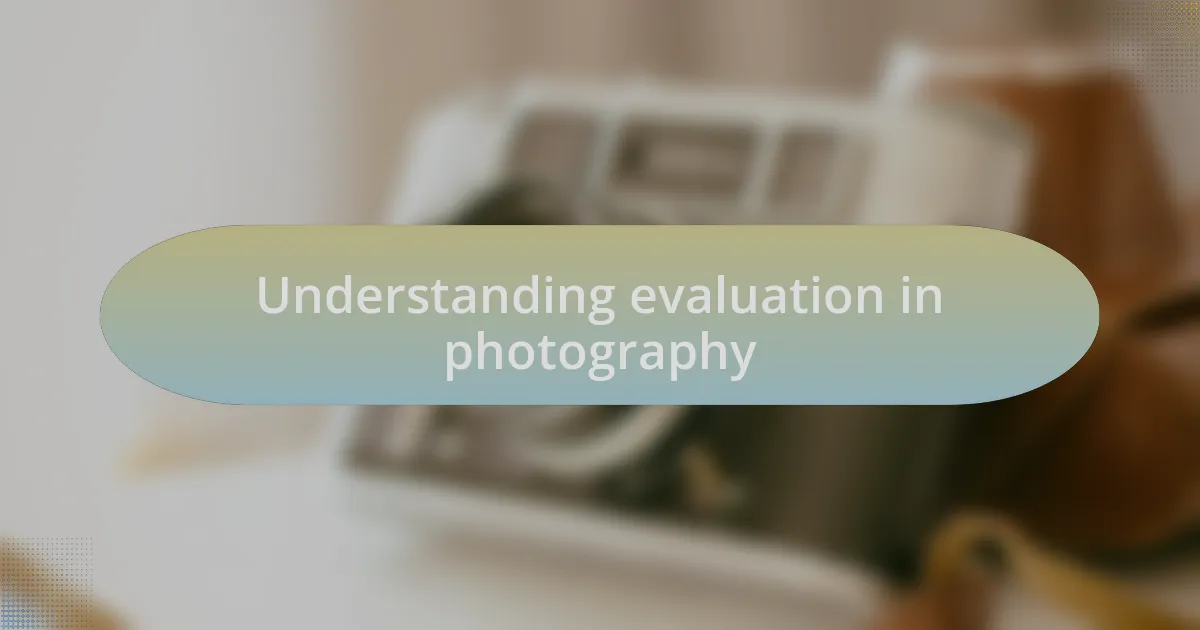
Understanding evaluation in photography
In photography, evaluation is a crucial step that transforms a snapshot into a powerful image. I remember the first time I looked back at my work and realized that identifying the strengths and weaknesses of my shots could significantly enhance my skills. Did you ever find yourself staring at a photo, wondering why it doesn’t quite resonate? That moment of reflection can be enlightening.
When evaluating a photograph, consider composition, lighting, and mood. I often find myself asking, “What story am I trying to tell?” This question helps me dissect the elements within the frame. For instance, I once captured a stunning sunset, but it felt lifeless until I fine-tuned my focus and played with the angles, which sparked a deeper emotional connection in the final image.
Recognizing your audience’s perspective is also vital in this process. I once submitted an image to a critique group, and their feedback opened my eyes to aspects I overlooked. It made me question my own vision: Am I creating for myself or for them? That dialogue can significantly enhance your artistic journey, helping you see your work through different lenses.
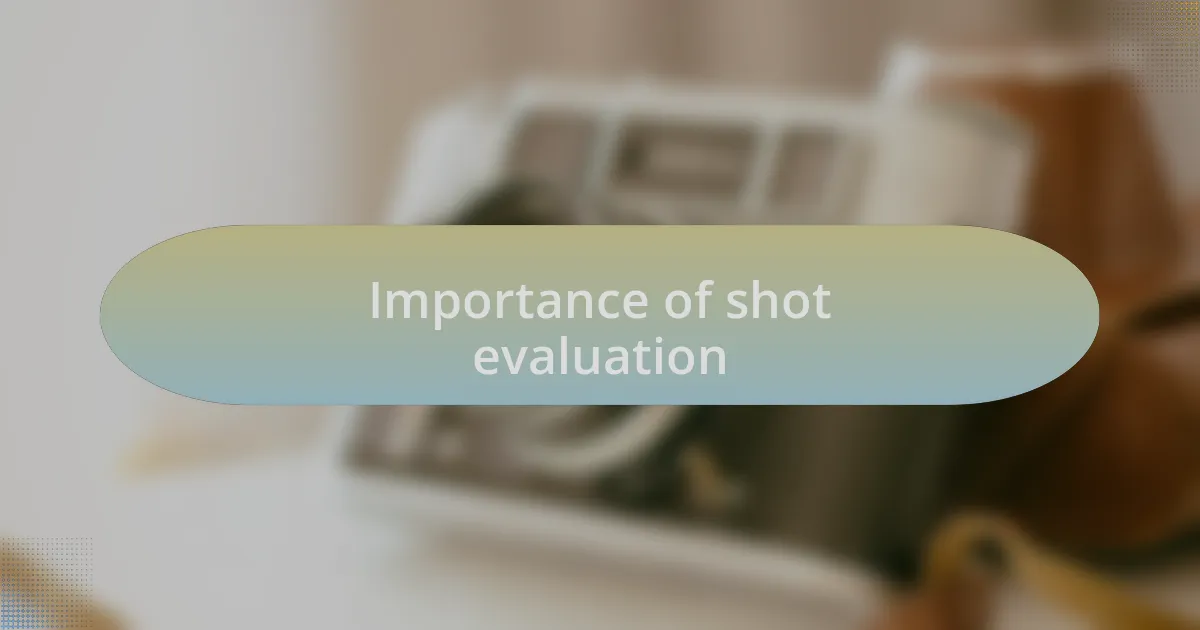
Importance of shot evaluation
Evaluating each shot is essential because it fosters growth as a photographer. I remember going through a stint where I felt stagnant in my creative journey. But when I began to scrutinize my photos more deeply, it became apparent that my subconscious patterns were holding me back. Have you ever felt like your work wasn’t progressing? That clicked for me, and I realized that self-assessment was the key to breaking through my creative block.
Moreover, the process enables an emotional connection with your audience. Once, I shared a candid of a street performer with friends, and their reactions surprised me. While I thought it was simply a good shot, they felt the energy and passion emanating from the image. This taught me that evaluating a shot isn’t just about technical aspects; it’s about understanding how those elements evoke feelings and connect with viewers.
In essence, a thorough evaluation can turn a good image into a meaningful narrative. I often reflect on photos from years past and see how much I’ve evolved by understanding what resonates with my heart and the audience’s. When was the last time you connected deeply with your photography? That introspection can be a powerful catalyst for not just your art, but also your personal growth.
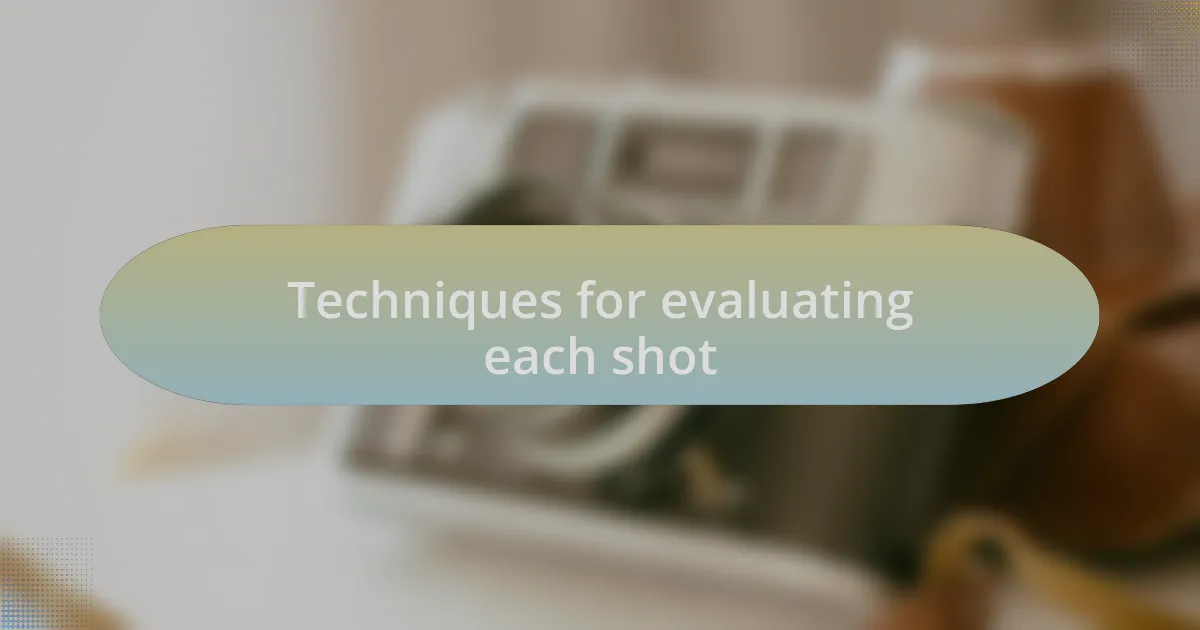
Techniques for evaluating each shot
When I evaluate each shot, I focus first on composition. I often ask myself, “Does this image tell a story?” While working on a nature project, I realized that a perfectly symmetrical shot didn’t spark interest. Instead, a slightly off-center framing highlighted the subject’s interaction with the surrounding elements, creating a sense of movement and life. That shift in focus made me appreciate how composition can guide a viewer’s eye and shape their understanding of the scene.
Next, I examine lighting. I can’t overstate its importance—light can make or break an image. I recall taking a portrait in the golden hour, and the soft hues brought warmth to the subject’s expression. That moment taught me to consistently assess how different lighting conditions influence mood. Are my highlights too harsh, or are shadows enhancing the depth? Evaluating these aspects helps me discover the mood I want to evoke.
Lastly, I look at the emotion conveyed in the shot. It’s fascinating how an image can trigger feelings. I remember capturing a spontaneous laugh during a family gathering. The moment felt fleeting, yet the photograph retained that joy. I often think about how important it is to recognize those genuine emotions and make sure they resonate with the viewer. After all, isn’t it our goal to connect on some level? Evaluating for emotion reminds me that photography is not just about the visual, but also about the heart.
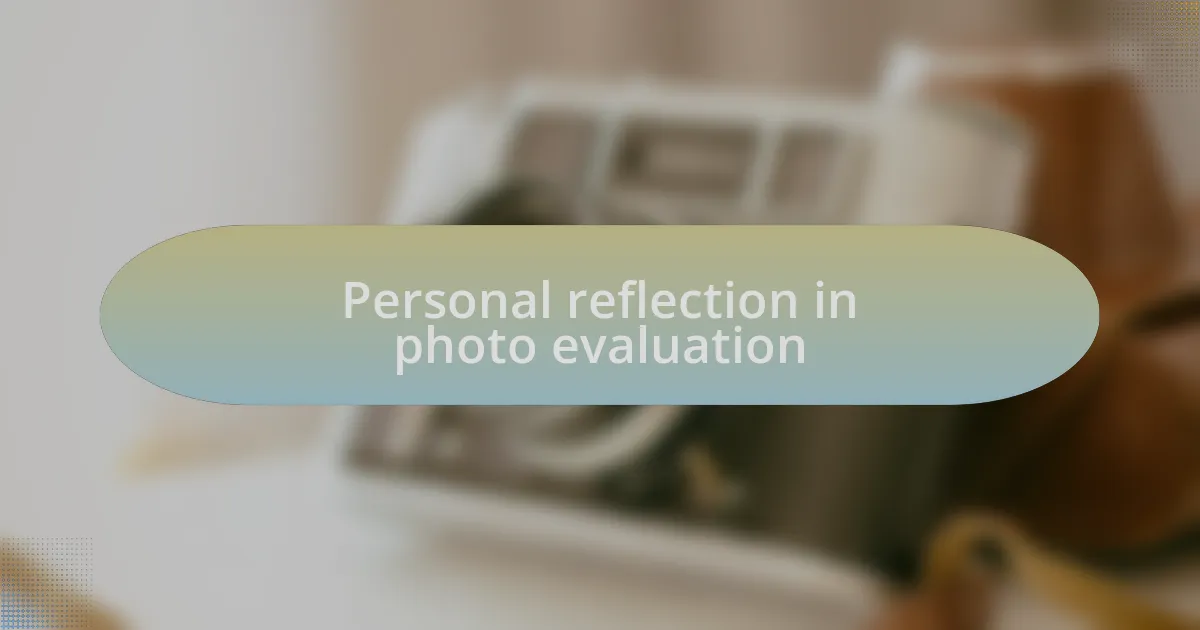
Personal reflection in photo evaluation
Personal reflection is essential when I evaluate my photographs. I often find myself pondering the intention behind each shot. For instance, during a recent trip to a bustling market, I took a candid photo of a vendor smiling while serving customers. That image sparked a realization: capturing authenticity can often mean more than any technical perfection. It made me wonder, what stories am I really telling with my images, and are they resonating with others?
When I pause to reflect, I explore how each photo aligns with my personal growth as a photographer. I recall experimenting with a new technique while shooting long exposures at a beach during sunset. The swirling waves captured in soft motion were mesmerizing. This experience prompted me to ask myself if my evolving style aligns with who I am as an artist. Am I pushing the boundaries of my creativity, or am I just repeating what feels comfortable?
I also think about the emotional impact of my images during this reflective process. A few months ago, I snapped a photo of my child lost in thought on a swing, bathed in soft afternoon light. Every time I look at that image, it evokes a rush of nostalgia. I realize how vital it is for me to capture these transient moments that trigger strong emotional responses. Isn’t that what makes photography so powerful—its ability to hold onto fleeting feelings and memories?

Tips for improving shot evaluations
Evaluating my shots often begins with honing my technical skills. I remember a time when I struggled with focus while photographing distant landscapes. By consistently practicing different focus techniques, I gradually gained clarity—not just in my images, but in assessing the importance of sharpness and composition for each shot. I ask myself, what technical elements could I tweak to elevate the visual story I’m telling?
Another critical aspect is soliciting feedback from fellow photographers. Once, after sharing a series of portraits, I received constructive criticism on my lighting choices. This outside perspective opened my eyes to details I might have overlooked and sparked ideas for future shoots. It made me wonder, how much could my photography evolve if I embraced this practice more often?
Lastly, I find it immensely beneficial to keep a shooting journal where I document my thoughts about each session. After a day capturing street scenes, I made a note of my frustrations with crowded backgrounds. Revisiting those reflections later helped me identify patterns and improve my selections during editing. It’s fascinating how writing down my processes can clarify my goals—what am I striving for, and how can I achieve it more effectively?
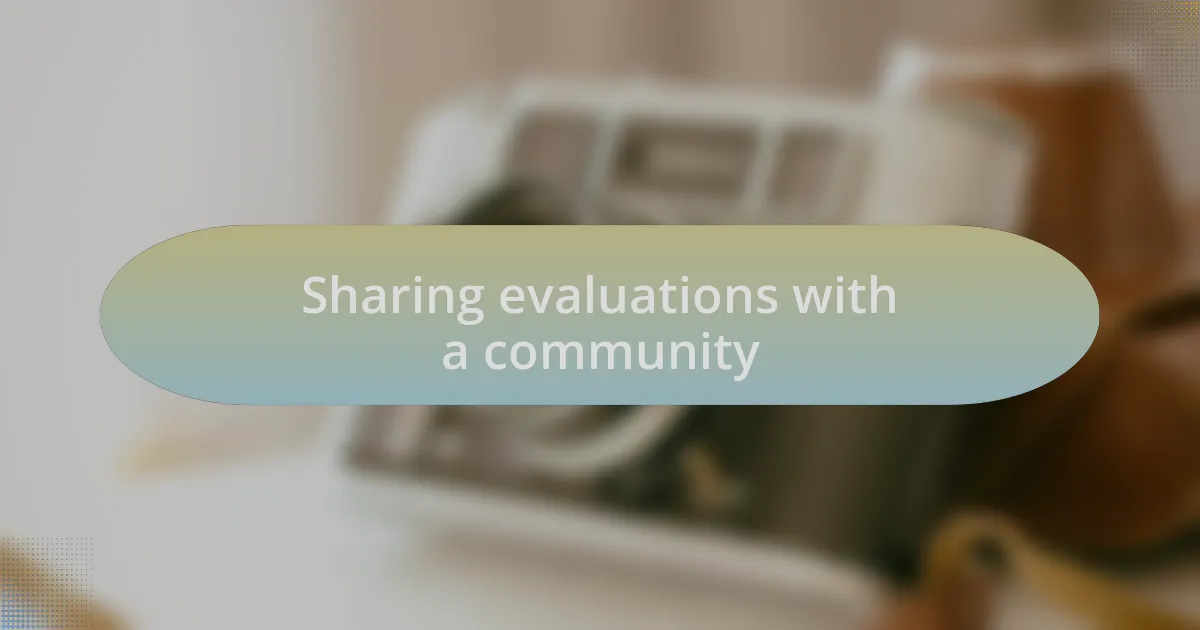
Sharing evaluations with a community
Sharing evaluations with a community can be a transformative experience for any photographer. I recall the first time I posted an evaluation of my work on a photography forum. The support and diverse perspectives I received not only bolstered my confidence but also challenged my understanding of my own artistic choices. It’s interesting to ponder how sharing my insights led to constructive discussions, allowing others to see my work—and their challenges—in a new light.
Engaging with others in a community means receiving feedback that often brings to surface the nuances in my photography. I recently shared a critique of my urban photography where I focused on line and texture. The feedback ignited a deeper conversation about how different environments influence our approach. Have you ever wondered how collective wisdom can reshape your vision? Those conversations have pushed me to experiment with styles I may have otherwise ignored.
Moreover, collaboration fosters a sense of accountability that drives growth. When I organized a photo critique meet-up, I felt an invigorating mix of nerves and excitement. Each person showcased their work, and in sharing our evaluations, we collectively unravelled the essence of our artistic intents. Isn’t it rewarding to think that shared evaluations can spark connections, turning what once felt like solitary struggles into a supportive journey towards mastery?